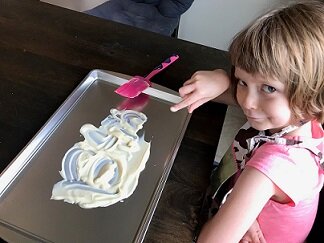Want to Feel Like You’re Making a Life Changing Difference in a Child’s Life?
Consider Teaching with Silent Elephant “e”!
I am honored and blessed that parents entrust me with such a valuable part their child’s life and education!
I am humbled by my students and “parents” expressions of thanks as in the following letter I received from one of my “parents” last week:
“When we first met Linda in the fall of 2016, my daughter was 2 years below her reading grade level.
I knew she struggled with reading, but I didn't realize she was dyslexic.
I wasn't aware that dyslexia is not just mixing up d's and b's. Dyslexia has a myriad of ways to make learning to read difficult.
Linda not only has helped my daughter, she also helped me to understand how dyslexia affects the way she processes information.
Linda has a passion for helping kids learn to read. Linda’s patience and teaching techniques make the lessons not only enjoyable for my daughter, but most importantly, she remembers what is being taught!
My daughter’s self confidence has blossomed since Linda came into our lives. She no longer fears being called on to read out loud in class, as she is now reading one and a half years above grade level!
My eyes fill with tears, as I can't recommend Linda or her program strongly enough. She has changed my daughter’s life.”
Emily C.
My footnote:
When this delightful, sweet girl came to me, she was unable to successfully complete my Phonemic Awareness Part 1 assessment, so I didn’t give her Part 2. She was definitely not hearing the individual sounds within words!
For ten to fifteen minutes of her twice a week tutoring session for fourteen weeks, she completed lessons in Part 1 of Phonetic Reading with Silent Elephant “e”.
At that time, I assessed her progress. She completed Phonemic Awareness Part 1 assessment and Part 2 assessment with 100% accuracy! She now has a strong, solid foundation with which to continue building her reading skills.
My acquired knowledge from teaching 44 years and my concern and compassion for each child is compiled within Silent Elephant “e”.
My main objective for writing Silent Elephant “e” is to provide an engaging, highly effective, multi-sensory reading program for teachers and parents to guide students to quickly and painlessly learn to read without years of struggling, humiliation, and self-deprecation.
Added to this objective is my knowledge, from personal experience and from helping other parents, that for every child struggling to learn to read (one in five), there are twice as many parents anxious and worried about their child’s progress in reading, writing and spelling; their child’s self-confidence and self-pride; and their child’s happiness.
The truth is every person WANTS to read. People innately know they need to be able to read to succeed in our culture. Therefore, EVERYONE can benefit from Silent Elephant “e” as it quickly guides him or her to successfully acquire excellent reading skills.
My program is “the way all people learn and appreciate being taught. The dyslexic thrives, the ELL/ESL thrives, AND all others thrive. Everyone benefits,” concluded my editor Nina Henson.
My reading program makes a difference in dyslexic readers’ lives, in struggling readers’ lives, in ALL readers’ lives!
Join me in truly making a difference in students’ lives!
If you are questioning whether Silent Elephant “e” is the comprehensive reading, writing and spelling program you’d like to purchase, feel free to contact us.






























